On 14th August 1944 this aircraft set out from Lossiemouth airfield in the early evening for an evening cross country training exercise. The aircraft crashed at 22.30hrs onto moorland on the minor summit of An Lurg, a mile north of the munro Bynack More and all on board were killed. The wreckage is fairly well scattered certainly suggesting that the aircraft broke up in the air. There is a suggestion elsewhere on the internet that part of the crash site was not found until 2004. During my visit to the site in August 2011 it was clear that someone had been to the site and had been digging in recent weeks and had left a broken spade at the site. I found the remains of a flying helmet uncovered shortly before my visit and discarded; one therefore wonders what someone was looking for or expecting to find.
Pilot - P/O Philip Lionel Bennett Paterson RAFVR (175168), aged 23, of Walkden, Lancashire. Buried Elgin New Cemetery, Morayshire (H/South Div/156).
("Flight Engineer")/Navigator - Sgt James Michael Downey RAFVR (1800550), aged 21, of Greenwich, London. Buried Leytonstone Cemetery.
Navigator - Sgt Harold Tudhunter RAFVR (1523611), aged 22, of Whitehaven. Buried Whithaven Cemetery, Cumbria (5/P/10).
(Bomb Aimer?)/Wireless Operator / Air Gunner - Sgt Stephen Fraser RAFVR (1569101), aged 21, of Auldearn, Nairnshire. Buried Lossiemouth Burial Ground, Morayshire (1261).
Wireless Operator / Air Gunner - P/O Denis Henderson Rankin RAFVR (175934), aged 24, of Belfast. Buried Carnmoney Cemetery East, Belfast.
Air Gunner - Sgt Robert Arthur George Bailey RAFVR (3006845), aged 19, of Bungay. Buried Bungay Cemetery, Suffolk.

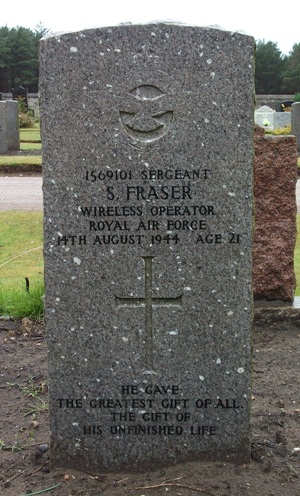
Graves of two of the crew who died as a result of this accident.
The two officers in the aircraft received their commissions around the same time, Philip Paterson received his commission to the rank of P/O on probation (emergency) on 6th March 1944. Denis Rankin received his commission to the rank of P/O on probation (emergency) on 4th February 1944.
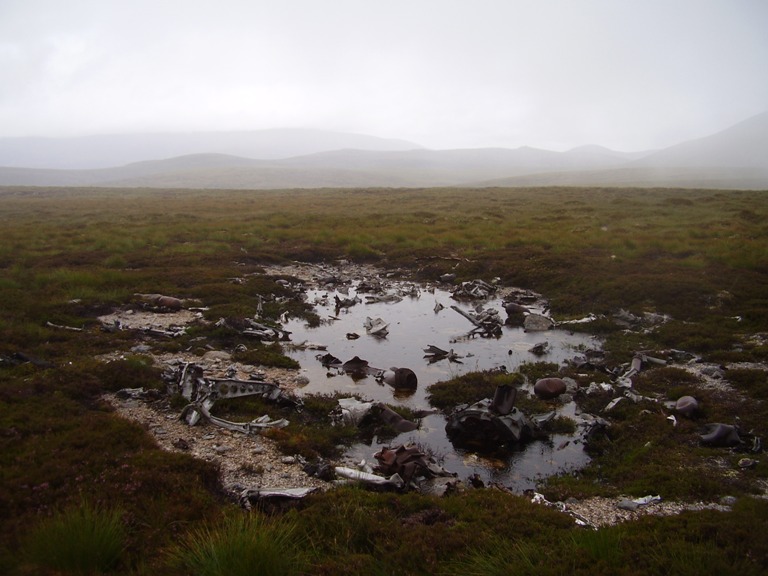
Will Lund and I visited this crash site on the first day of our August 2011 holiday as a warm-up walk for the forthcoming days, the weather on this day was poor to say the least. The aircraft wreckage is spread over some 400 metres with three larger collections of wreckage found. The two photographs here show two of these collections with the first showing where the minimum of one wing hit the ground with it's engine still underpower which then disintergrated on impact and is visible in the water in the foreground of the photograph above.

The photograph above shows the largest collection of wreckage which appears to be a combination of where some of the aircraft struck the ground and also where other parts of the aircraft appears to have been thrown in to clear the surrounding moor. The second engine is not at the site from what could be seen on our visit though it is possible that if the aircraft exploded in the air and then crashed then a wing (with an exploding fuel tank?) could have broken away and landed some distance away. In this area I found the remains of a flying helmet which had been discarded by recent digging activities by persons unknown.

A couple of good identification peices, the top photograph shows a typical Wellington part number sequence and the lower photographs one of a number of .303 bullet cases with the "RG 1942 BVIIZ" markings traced to 1942 made incendiary bullets by the Royal Ordnance Factory, Radway Green, Cheshire.
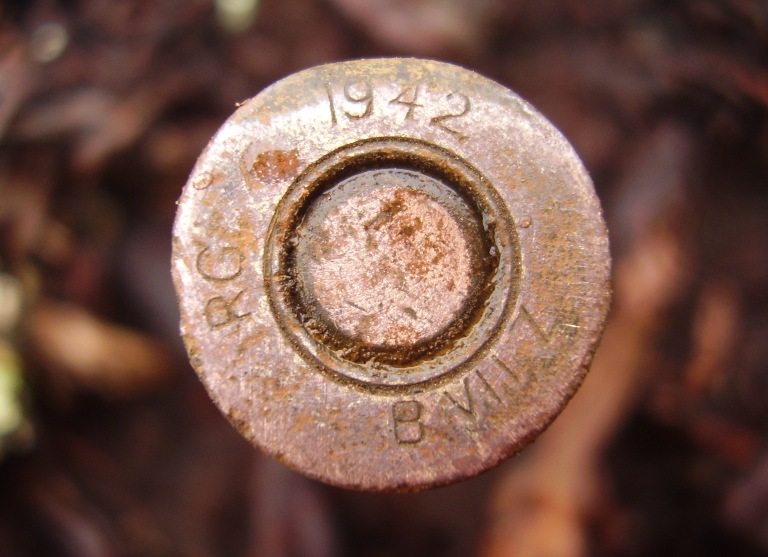
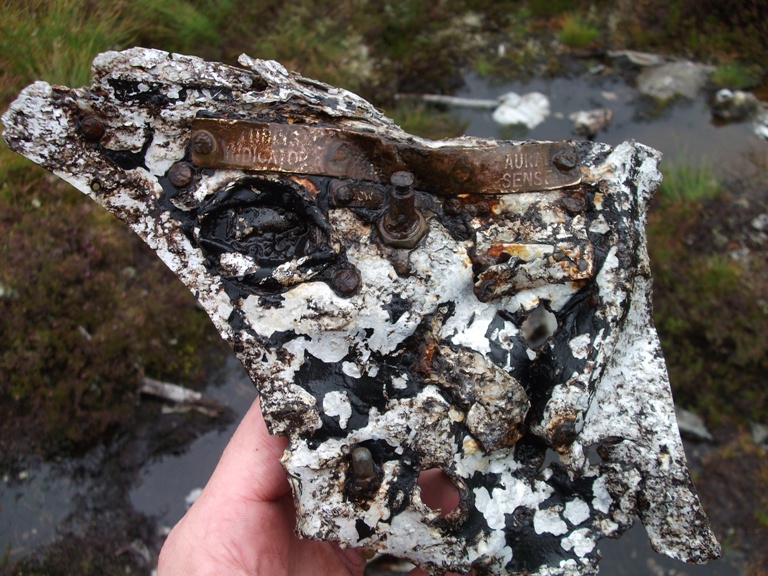
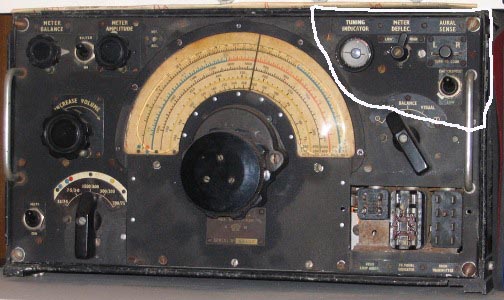
The photograph above shows part of the R1155 radio receiver and an intact one showing the same area.
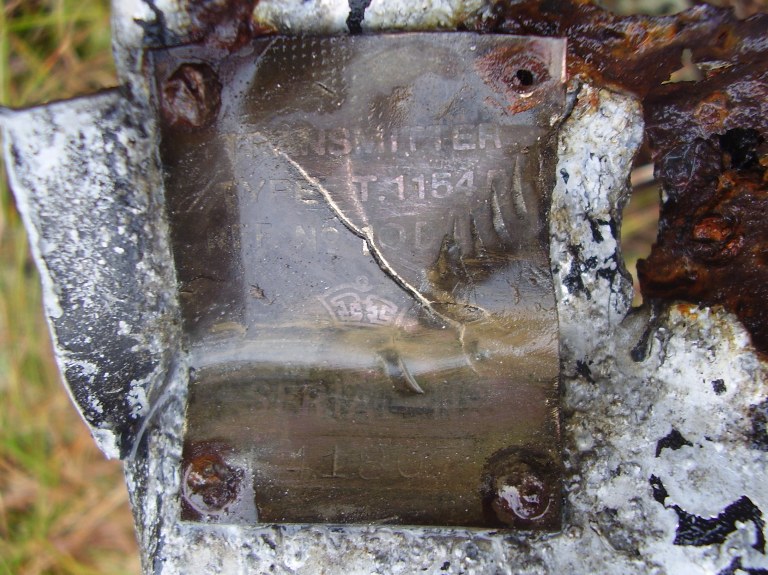
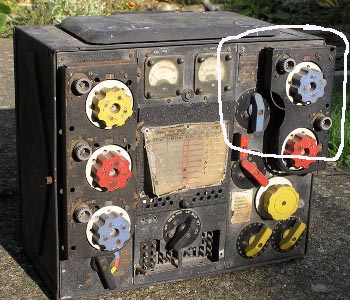
The serial number plate from the T1154b radio transmitter and again an intact one showing the same area.